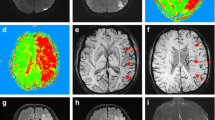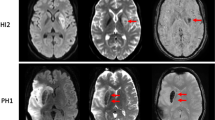Abstract
Acute stroke is one of the three major causes of death and disability in the United States. Now that new, and possibly effective therapy is becoming available, accurate, rapid diagnosis is important to provide timely treatment, while avoiding the risk of complications from unnecessary intervention. Our objective was to test the hypothesis that use of echo-planar (EPI) diffusion-weighted imaging (DWI) is more accurate than conventional T2 weighted MRI in predicting progression to stroke in patients with acute ischemic neurologic deficits. We studied 134 patients presenting with acute neurologic deficits to a community hospital emergency room with both conventional MRI and DWI within 72 h of the onset of the acute deficit. We found DWI significantly more sensitive to permanent neurologic deficit at discharge (sensitivity 0.81) than conventional MRI (sensitivity 0.41). When available, DWI should be considered for routine use in patients being imaged for acute stroke.
Similar content being viewed by others
Author information
Authors and Affiliations
Additional information
Received: 21 January 2000 Accepted: 7 October 2000
Rights and permissions
About this article
Cite this article
Wiener, J., King Jr., J., Moore, J. et al. The value of diffusion-weighted imaging for prediction of lasting deficit in acute stroke: an analysis of 134 patients with acute neurologic deficits. Neuroradiology 43, 435–441 (2001). https://doi.org/10.1007/s002340000499
Issue Date:
DOI: https://doi.org/10.1007/s002340000499




